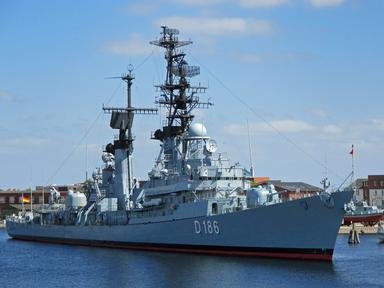Quiz Answer Key and Fun Facts
1. The London Naval Conference that produced the 1930 Treaty was preceded by an arms limitation conference that failed to reach agreement. What was that prior unsuccessful conference?
2. The Washington Treaty of 1922 did not regulate this type of warship. However, the London Treaty of 1930 prescribed both individual design limits and total tonnage limits. What type of vessel is this?
3. The Washington Treaty of 1922 created an unexpected competition in building cruisers armed with 8" guns. What was one way the London Treaty of 1930 addressed this problem?
4. Submarine warfare against merchant shipping was a continuing concern. How did the London Treaty of 1930 address it?
5. The definition of "aircraft carrier" in the Washington Treaty of 1922 stated in part: "a vessel of war with a displacement in excess of 10,000 tons designed for the specific and exclusive purpose of carrying aircraft. It must be so constructed that aircraft can be launched therefrom and landed thereon ..." The London Treaty of 1930 deleted one of these criteria. What loophole was plugged?
6. The London Treaty of 1930 provided that "No capital ship in existence on 1 April 1930 shall be fitted with a landing-on platform or deck". Did any of the five powers ever do so?
7. The London Treaty of 1930 required the signatory powers to reveal the basic characteristics of newly-built cruisers, but one feature was omitted from the required disclosures. What was it?
8. The Washington Treaty of 1922 did not limit the construction of destroyers; the London Treaty of 1930 did so. What key characteristic of destroyers was NOT limited by the London Treaty?
9. The Washington Treaty of 1922 allowed the five powers to build new (replacement) capital ships during the period 1931 through 1936. In the London Treaty of 1930, they agreed not to so do - except for Italy and France. Why the exception? Italy and France ...
10. The London Treaty of 1930 continued the 16" gun size limit imposed by the Washington Treaty of 1922. Did any of the five powers ever complete any capital ships with guns larger than 16" - even after the Treaty system ended?
Source: Author
ignotus999
This quiz was reviewed by FunTrivia editor
stedman before going online.
Any errors found in FunTrivia content are routinely corrected through our feedback system.
